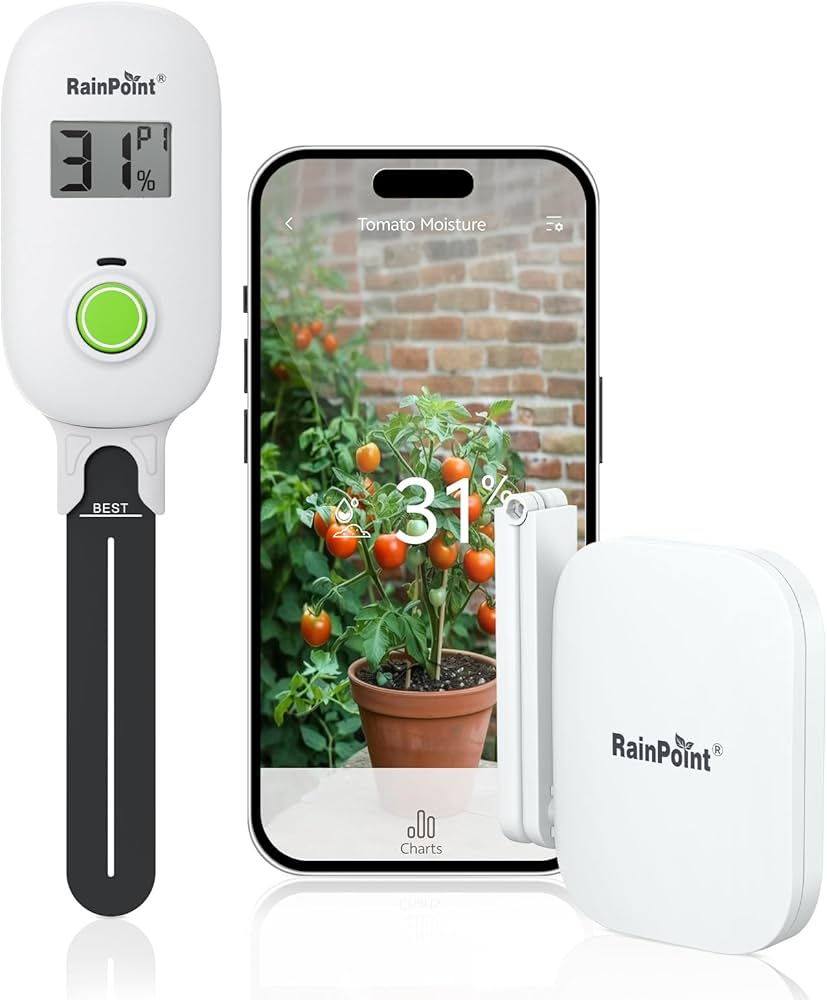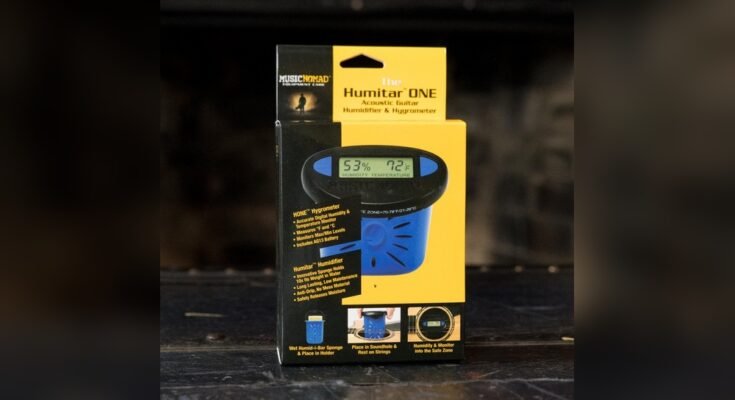Have you noticed your hygrometer showing a lower reading than you expected? It can be confusing and even a little frustrating when your device doesn’t match what you feel in the air.
Understanding why your hygrometer reads low is important—it helps you keep your space comfortable and protects your belongings from damage. You’ll discover the common reasons behind those low readings and simple steps you can take to fix them. Keep reading to make sure your hygrometer works the way it should.
Common Causes Of Low Hygrometer Readings
Low hygrometer readings can confuse many users. It often signals issues beyond just the humidity level. Identifying the cause helps fix the problem quickly. Several common reasons explain why your hygrometer shows low readings.
Calibration Issues
Hygrometers need proper calibration to work well. Over time, their accuracy drops. A miscalibrated device shows wrong humidity levels. Regular calibration keeps readings true. Some models allow easy manual calibration at home.
Environmental Factors
Temperature affects hygrometer performance. Extreme cold or heat can lower readings. Dry air naturally causes low humidity numbers. Dust and dirt also impact sensor accuracy. Keep the device clean and avoid harsh environments.
Device Placement
Where you place the hygrometer matters. Near windows or vents, air flows cause false lows. Placing it in direct sunlight distorts results. Find a spot with stable air and temperature. Avoid kitchens and bathrooms with fluctuating moisture.
Battery Problems
Low battery power weakens digital hygrometer function. The device may show incorrect humidity levels. Replace batteries regularly for steady performance. Check battery contacts for corrosion or dirt. Fresh power ensures accurate readings every time.
Sensor Malfunction
Hygrometer sensors can wear out or break. Faulty sensors fail to detect moisture properly. This problem causes consistently low readings. Some sensors may get damaged by water or dust. Repair or replace the device if sensor issues arise.

Credit: www.amazon.com
How To Calibrate Your Hygrometer
Calibrating your hygrometer helps ensure accurate humidity readings. Over time, these devices can drift and show wrong numbers. Regular calibration keeps the readings close to true humidity levels. Below are simple ways to adjust your hygrometer for better accuracy.
Salt Test Method
The salt test is a popular, easy way to check your hygrometer. Place a teaspoon of salt in a small container. Add a few drops of water to make it damp, not soaked. Put the container and your hygrometer inside a sealed plastic bag or jar. Wait for 8 to 12 hours. The hygrometer should read 75% humidity. If not, adjust the dial or note the difference for future reference.
Using A Calibration Kit
Calibration kits come with special tools and instructions. They often include a salt solution and a small chamber. Follow the kit’s guide step-by-step. Place your hygrometer inside the chamber with the solution. Keep it sealed for the time suggested by the kit. Check the reading and adjust your hygrometer if needed. Kits can be more precise than simple home methods.
Digital Calibration Steps
Digital hygrometers often have a reset or calibration button. Start by placing the device in a stable environment. Use a known humidity source, like a calibration kit or salt test. Press and hold the calibration button until the display resets. Allow the device to stabilize for several hours. Confirm the reading matches the known humidity level. Repeat if necessary to improve accuracy.
Environmental Adjustments To Improve Accuracy
Environmental factors affect hygrometer readings a lot. Small changes around the device can cause low readings. Adjusting the environment improves the accuracy of your hygrometer. This helps you get true humidity levels at all times.
Avoiding Direct Sunlight
Direct sunlight heats the hygrometer and the air around it. This causes the sensor to give false low readings. Keep the device away from windows or bright lights. Place it in a shaded spot for better results.
Controlling Room Temperature
Temperature changes affect how humidity is measured. Cold or hot air can trick the hygrometer. Keep the room at a steady, normal temperature. Avoid placing the device near heaters or air conditioners.
Reducing Airflow Interference
Strong airflow from fans or vents disturbs the humidity around the sensor. This leads to unstable or low readings. Put the hygrometer in a place with calm air. Avoid areas with direct drafts for consistent results.

Credit: www.acurite.com
Best Placement Tips For Reliable Readings
Getting accurate readings from your hygrometer depends a lot on where you place it. Poor placement can cause low or incorrect numbers. Follow these tips to find the best spot for your device. This helps the hygrometer measure the true humidity in the room.
Ideal Height And Location
Place your hygrometer at eye level or about 4 to 6 feet high. This is where most people breathe and live. Avoid placing it too close to the floor or ceiling. Both areas can have very different humidity levels. Choose a central location in the room to get an overall reading.
Avoiding Moisture Sources
Keep the hygrometer away from direct moisture sources. Do not place it near bathrooms, kitchens, or humidifiers. Steam or water splashes can make the readings too high. Too close to these places gives false humidity levels.
Keeping Away From Heat Sources
Heat affects hygrometers by lowering the humidity reading. Avoid placing the device near heaters, radiators, or sunny windows. Heat dries the air around the sensor and causes low numbers. A cool, shaded spot gives the best results.
Quick Fixes For Low Readings
Low readings on your hygrometer can cause confusion. Quick fixes can help you get accurate results fast. These simple steps often solve common issues without needing new equipment. Try these easy methods before considering a replacement.
Resetting The Device
Start by resetting your hygrometer. This step clears any errors in the system. Most models have a reset button or a small pinhole. Press and hold it for a few seconds. The device will restart and recalibrate its sensors. This can fix incorrect low readings.
Replacing Batteries
Old or weak batteries cause low readings. Check the battery level and replace if needed. Use fresh batteries that match the device’s specifications. Low power affects sensor performance and display accuracy. New batteries help the hygrometer work properly again.
Cleaning The Sensor
Dirt and dust on the sensor can affect measurements. Gently clean the sensor with a soft brush or cloth. Avoid liquids unless the manual says it is safe. Regular cleaning keeps the sensor free of debris. This improves the accuracy of the humidity readings.

Credit: www.acurite.com
When To Replace Your Hygrometer
Knowing when to replace your hygrometer can save you time and ensure accurate readings. A low reading may not always mean a problem with humidity. Sometimes, the device itself is faulty. Recognizing the signs of damage helps decide if replacement is necessary. Choosing the right model affects your home’s comfort and health.
Signs Of Permanent Damage
Check if your hygrometer shows the same low reading all the time. A stuck needle or unchanging digital display suggests damage. Cracks, moisture inside the device, or corrosion also indicate problems. If calibration does not fix the reading, the device is likely broken. At this point, replacement is the best option.
Comparing New Models
New hygrometers come in analog and digital styles. Digital models often offer better accuracy and extra features. Some provide temperature readings alongside humidity. Look for models with easy calibration and clear displays. Consider size and design to fit your space. Reading reviews helps find reliable brands.
Budget-friendly Options
Reliable hygrometers do not need to be expensive. Basic models work well for simple home use. Many affordable devices offer good accuracy and durability. Check for easy calibration and battery life. Budget options help maintain healthy humidity without overspending.
Frequently Asked Questions
Why Is My Hygrometer Showing Low Humidity?
Your hygrometer may read low due to calibration issues, sensor dirt, or placement near dry air sources. Check calibration, clean the sensor, and relocate it away from vents or direct sunlight for accurate readings.
How To Calibrate A Low-reading Hygrometer?
Use a salt test to calibrate. Place the hygrometer in a sealed bag with a salt-water mixture. After eight hours, adjust the device to read 75% humidity for accurate measurements.
Can Environmental Factors Cause Low Hygrometer Readings?
Yes, dry air, direct sunlight, or proximity to heaters can lower readings. Ensure the hygrometer is placed in a stable, shaded, and well-ventilated area for correct humidity levels.
Does Battery Life Affect Hygrometer Accuracy?
Low or dead batteries can cause inaccurate or low readings. Replace batteries regularly to maintain consistent and reliable hygrometer performance.
Conclusion
Low hygrometer readings often signal common issues. Check the device’s placement first. Avoid areas near windows or vents. Calibration might be off—try recalibrating it. Dirty sensors can also cause errors. Keep the device clean and dry. Sometimes, the air is simply dry.
Use a humidifier if needed. Regular checks help keep readings accurate. Understanding these points helps you trust your hygrometer. Keep monitoring for better indoor air quality. Simple steps make a big difference.



